The Weinstein Effect: Ronan Farrow and Ken Auletta at The Wallace House
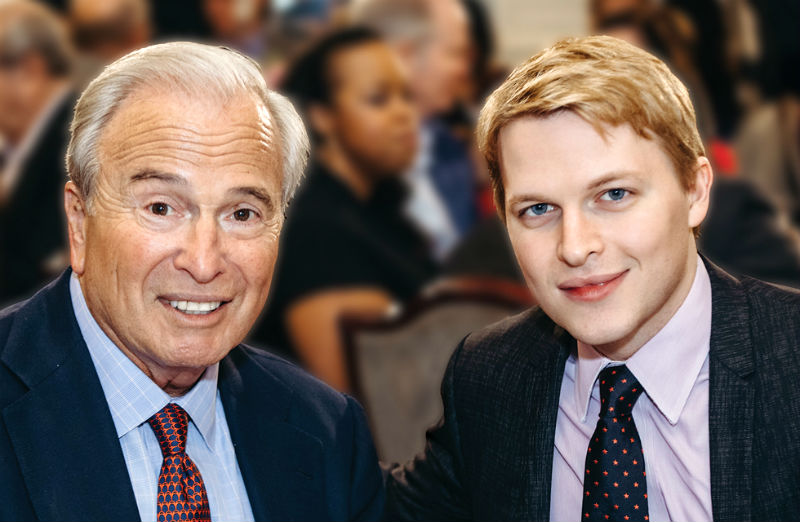
New Yorker journalists Ronan Farrow and Ken Auletta came to the University of Michigan on March 19 to discuss their work in breaking the Harvey Weinstein story. In particular, they spoke about what changed between 2002, when Auletta first attempted to write the story, and 2017, when Farrow succeeded. Farrow and Auletta were here on behalf of journalism powerhouse The Wallace House, and the crowd was full of noteworthy journalists. I waited in a long, snaking line to enter Rackham Auditorium and felt slightly inadequate.
For his writing on Weinstein and other powerful harassers, Farrow, along with The New York Times’ Jodi Kantor and Megan Twohey, won the 2018 Pulitzer Prize for Public Service. The Pulitzer joins a long list of Farrow’s other accomplishments: he graduated (yes, graduated) from Bard College at 15, earned a Yale law degree, worked for the State Department, and wrote the New York Times bestseller War on Peace: the end of Diplomacy and the Decline of American Influence. At some point in there, he also had a cable news show, became a Rhodes scholar, and is currently finishing a PhD from the University of Oxford. Ken Auletta is no slouch either, with 11 books and more than 25 years writing for the New Yorker under his belt. All of this is enough to make anyone feel that their life has been nothing but a pointless meandering of time.
Unlocking Creativity: The 24th Annual Prison Creative Art Project Show
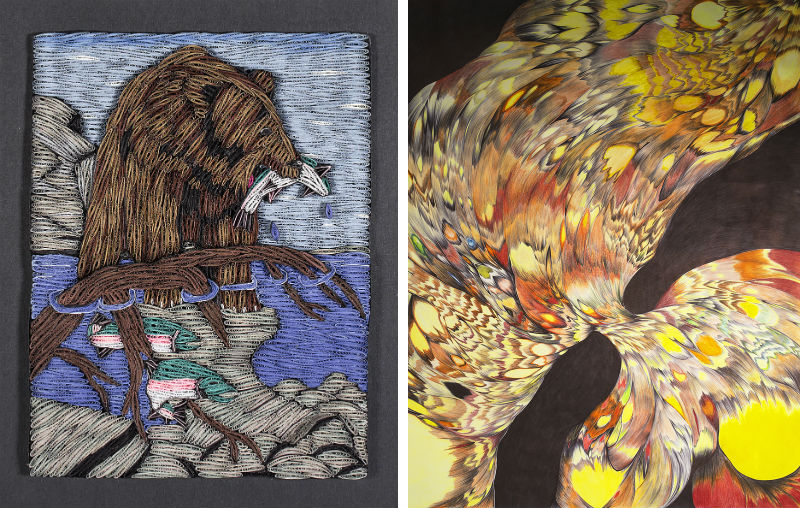
It is no secret that the American prison system is harsh, socially isolating, and unequal in its treatment of minorities and the poor. For most of us, that uncomfortable acknowledgment is followed by an awkward pause and a polite change of subject.
But visual artist and activist Janie Paul decided 24 years ago that she wasn't having it. Along with her husband, fellow activist and writer Buzz Alexander, she helped found the Prison Creative Arts Program, an ongoing project that connects men and women incarcerated in the Michigan prison system to the outside world through art. The 24th Annual PCAP Art Show, with original artworks by prison artists, opened March 20 at University of Michigan's Duderstadt Center Gallery.
Generation Next: "Inner Fragments: Contemporary Art by Iranian Women Artists"

Art exhibits get organized for lots of reasons. In the case of Inner Fragments, a traveling exhibit of 16 young Iranian women artists that landed recently (and briefly) in the University of Michigan’s Duderstadt Gallery, the organizers aim to correct what they see as some misperceptions in the West about contemporary art and artists in Iran.
Their work, varied in style and tone and featuring media from painting to sculpture to video, suggests that Iranian women artists share more with their Western sisters than the sum of their differences might suggest.
Representation, Now: “Art Now 2019: Painting” at Ann Arbor Art Center
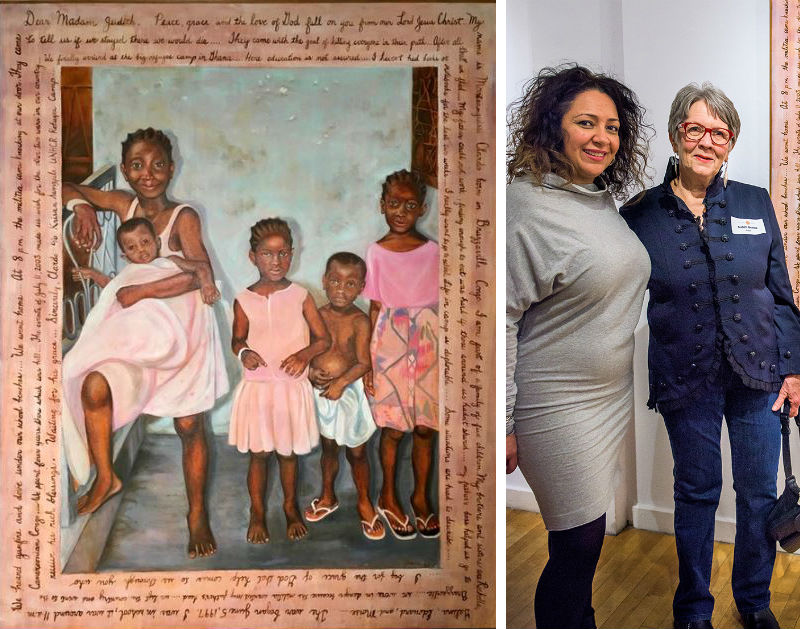
Continuing with the fifth installation of its semi-annual exhibition themes, the Ann Arbor Art Center’s Art Now 2019: Painting illustrates the vitality of this perennial art form in our contemporary arts.
Given the dramatic permutations that some art mediums have experienced in the last century -- fabrics and ceramics come readily to mind -- the transitions that painting underwent are seemingly under the radar. But this statement, of course, is not the case.
After all, it was only a little more than one brief century ago that the fury of expressionism was beginning to be felt in European art. Ultimately, various abstractions were going to rule the cutting-edge roost for all intent and purposes through mid-century to be supplanted by the playful shock of Neo-Dada in the 1950s and then branch into the various -isms that would amaze audiences through the balance of the 20th century.
Representation -- expressive or otherwise -- was always a predominant force in painting that worked itself around these flashier kinds of headliner aesthetics. And as the Art Center’s Art Now 2019: Painting heartily shows us, representations -- expressive or otherwise; particularly portraiture -- are still front and center in the visual arts same as it ever was.
Axis of Strategery: "Dispatches From the Dumb Decade" takes on the 2000s with song and humor

People sometimes struggle with how to refer to the first 10 years of the 21st century. The zeros? The aughts? Ypsilanti playwright A.M. Dean has put forth his own nickname for these transformative years in our nation’s history: The Dumb Decade.
Neighborhood Theatre Group’s original pop/rock musical Dispatches From the Dumb Decade follows its characters as they come of age in the age of 9/11, George W., Weapons of Mass Destruction, the Axis of Evil, "strategery," and the birth of fake news. All these things that I had put behind me were brought alive again through music and song. We were so innocent back then.
Influence & Appropriation: Carrie Mae Weems at the Michigan Theater

“Sometimes we remodel because we’ve been left out.” --Carrie Mae Weems
I guess I would call myself superstitious. At least that’s how I think about it in those moments when I feel like the universe is pushing me in one direction or another.
I went to see Carrie Mae Weems speak on February 14 as a part of the Penny W. Stamps Distinguished Speaker Series. This was my second time in the Michigan Theater in the space of one week and for someone who sees herself as a person of somewhat nerdily pedestrian interests, I find myself off-kilter when I frequent what I think of as a higher-brow spot. I’m more Netflix than Michigan Theater.
Weems, though, is a name that I have come to know through encountering her work here and there -- and then having an I-have-to-know-more-about-this-artist moment, finding again, I am looking at Weems’ work.
Recombinant Tales: Ruth Crowe’s “Storytelling with Photo Infusion and Encaustic” at Gifts of Art
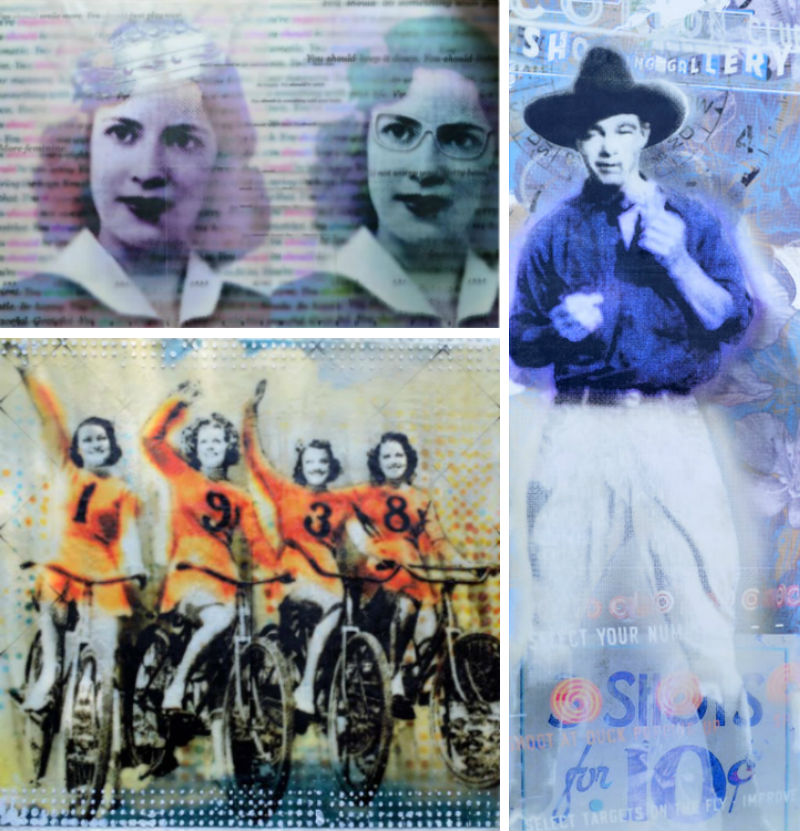
Taken separately, photo fusion and encaustic are interestingly differing forms of art. Taken together, they reflect local artist Ruth Crowe’s wry multimedia Storytelling with Photo Fusion and Encaustic exhibit at the Gifts of Art Gallery in the University of Michigan Hospital main corridor.
Crowe definitely has views she wants to communicate in her art, yet she’s not a polemicist. Rather, she allows for her work to speak for itself. It’s a brave strategy -- and it’s this subliminal perspective that speaks volumes of her views.
With Full CareForce: Marisa Morán Jahn's "The Mighty and the Mythic" at Stamps Gallery explores interactive, social-activist art

The Stamps Gallery's The Mighty and the Mythic is an interactive exhibit featuring the multi-faceted work of social activist and artist Marisa Morán Jahn. Curated by Srimoyee Mitra, this exhibition is an expansive collection with examples from three of Jahn’s ongoing projects. If you visit, make sure to give yourself plenty of time to view the many videos playing on TV screens around the gallery.
The three projects on display are CareForce (2012 to present), Biblobandido (2010 to present), and MIRROR | MASK (2017 to present). Though these are the artist’s solo projects, Jahn relies on the participation of her collaborators, who are often immigrants, domestic workers, and youths. Stamps Gallery notes that the work is infused with play and humor in order to portray her subjects’ lives with dignity, the ability to critique power, and to “build momentum within their communit[ies].” Jahn bases her practice on her own experiences as the child of first-generation Chinese and Ecuadorian immigrants.
All the World's a Stage: Madeleine Albright at The Michigan Theater

Madeleine Albright is the former secretary of state I’d most love to have a drink with if given the chance. I learned this after seeing her speak about her book Fascism: A Warning at the Michigan Theater on February 2. Heck, I’d love to have a drink within eavesdropping distance from Secretary Albright.
“I’m an optimist who worries a lot.” --Secretary Madeleine Albright
I almost didn’t go. I was a grump that evening. It was cold, and I didn’t want to go outside and I had a series of other minor complaints competing for space in my head. But it feels very weird to skip a talk on fascism in order to wallow in a personal pool of whininess.
The theater took extra care with security that evening so for those of us at the back of the line, closer to Division St. than the Michigan Theater, it took a while to get out of the cold. By the time I made it into the theater, Secretary Albright was already into her conversation with University of Michigan professor Juan Cole.
I sat down just in time to hear Albright argue that fascist leaders capitalize on fear, use the media, don’t respect institutions, and are full of simple solutions for issues that actually require complex approaches and attention to nuance. Punctuated by bursts of applause, she continued, stating that according to her definition, North Korea’s Kim Jong-Un is currently the only leader who fits that description. However, many others have certain fascist tendencies.
It's a Family Affair: A mother-and-son creative partnership on exhibit at NCRC
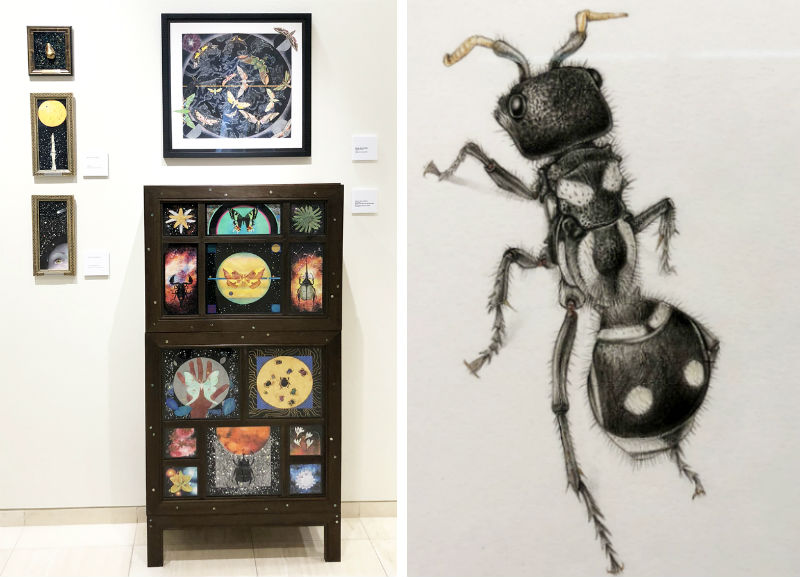
The spirit of the Renaissance's Cabinets of Curiosity is alive and well and on display in the University of Michigan’s NCRC galleries through May, courtesy of a mother-and-son artist duo. Two separate exhibits, Ecological Fiction by Karen Anne Klein and Hidden Ubiquity: Celebrating the Tiny Majority by Barrett Klein, delineate and illustrate nature’s inhabitants and habitats, from the cosmic to the minute.


































